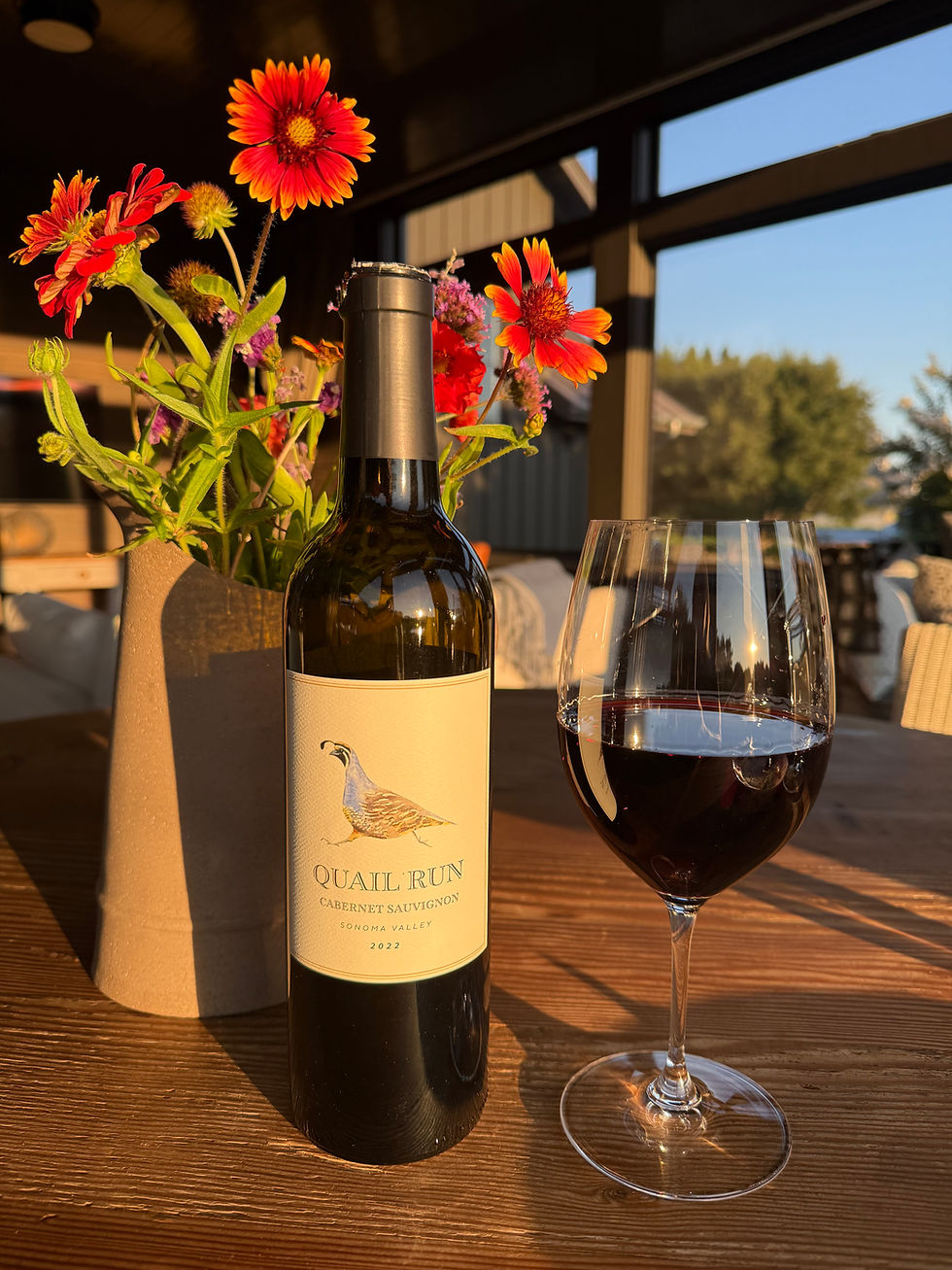Chapter 16: QUAIL RUN Wines: Wine Tasting Strategy for Newbies
- Janette Keating
- Jun 22, 2023
- 2 min read
Updated: Jun 26, 2023

In wine country, a visit to a winery may include learning about the grape varieties used in their wine. You may hear something about the farming practices used in the vineyards, and how the wine is made. The type of barrels as well as the length of time the wine is aged in the barrels contributes to the taste as well. Then you taste.
Red wines like QUAIL RUN can possibly have fruity notes: red fruits like cranberry, pomegranate, cherry and raspberry as well as dark fruits like plum, blackberry, blackcurrant or blueberry. As a result of the oak barrels a whole other set of notes can sometimes be deciphered such as woods, like pine, cedar and oak, nuts like almond, hazelnut and coconut and spices like clove, nutmeg, licorice, cinnamon, pepper and vanilla and chocolate. These are some to get started.
This is a strategy for tasting. You can use this five step plan.
See, Swirl, Sniff, Sip, and Savor
First, it is noteworthy to look at the color of the wine (See). Reds can range from light and clear to dark and deep colored.
Second, by swirling the glass and sending the wine around the interior you add some air so that the flavor opens up a bit.
Third, (Sniff) take a moment to put your nose into the glass and inhale the aroma. This is the first part of tasting. The nose gives us a lot of information about the overall taste.
Fourth, (Sip) take some wine into your mouth and let it reach the tongue and outer edges of the mouth before swallowing. How do different parts of your mouth receive the wine? What tastes do you notice?
Fifth, (Savor the finish) after swallowing the sip, does the wine leave an after taste in your mouth? Is it pleasant, tart, dry, sweet?
To see the tasting notes form click here:
Please email your tasting notes to jan.keating@mac.com by September 1, 2023.
Thank you!






Comments